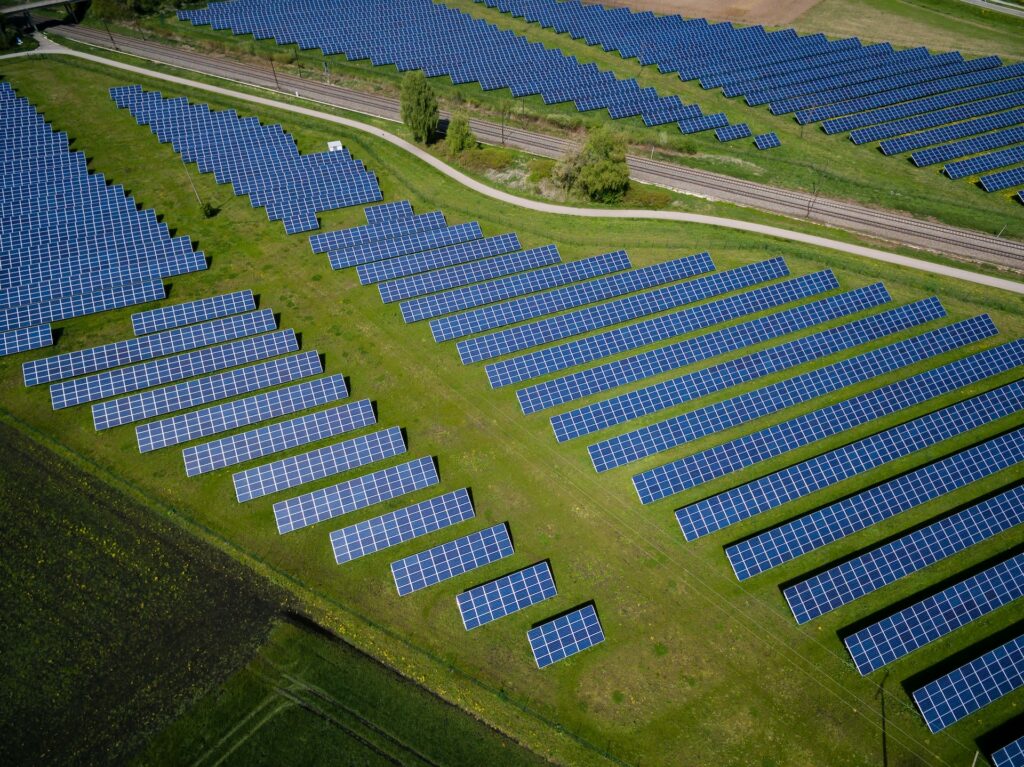The global pursuit of sustainable energy sources has led to a remarkable surge in innovation within the renewable energy sector. As nations strive to reduce their carbon footprint and combat climate change, the role of patents in driving technological advancement has become increasingly crucial. This article aims to delve into the intricate world of valuing patents specifically within the realm of renewable energy technologies.
Understanding Renewable Energy Technology Patents
Renewable energy technologies encompass a diverse array of solutions, each contributing to a cleaner and more sustainable future. Solar energy, harnessing the power of the sun, stands as a prominent player in the field. Wind energy, generated by wind turbines, and hydroelectric power, derived from the force of flowing water, are equally pivotal. Geothermal energy, tapping into the Earth’s internal heat, and bioenergy, derived from organic materials, further diversify the landscape.
At the heart of these innovations lie patents, serving as the guardians of intellectual property. These legal instruments not only protect the inventors’ rights but also stimulate further research and development. The intricacies of renewable energy patents become apparent when examining specific cases of success, such as breakthroughs in solar panel efficiency or advancements in wind turbine design.

Factors Influencing the Valuation of Renewable Energy Technology Patents
The valuation of renewable energy technology patents is a multifaceted process, influenced by various factors. One such determinant is the technological uniqueness and novelty embedded in the patent. The examination of novelty involves a meticulous review of prior art to ensure that the patented technology brings something new and innovative to the table.
Beyond novelty, the scalability and applicability of the patented technology play a pivotal role in valuation. A patent that can be easily integrated into existing systems or serve as a foundation for further innovations holds a higher value. This adaptability is not only a testament to the patent’s potential market impact but also an indicator of its longevity in the rapidly evolving renewable energy landscape.
The legal landscape surrounding renewable energy patents is another critical factor influencing valuation. The strength of a patent, assessed through its breadth of claims and ability to withstand legal challenges, directly impacts its value. A robust and defensible patent provides a sense of security to investors and stakeholders, boosting its perceived worth.
Moreover, the stage of development of the patented technology significantly affects its valuation. Patents covering technologies in the early stages of development may be deemed riskier investments, as their commercial viability is yet to be fully established. In contrast, patents associated with proven, commercially successful technologies carry a lower risk, translating to higher valuation.
The market dynamics within the renewable energy sector also contribute to the valuation process. Factors such as market demand, potential for mass adoption, and competition within the industry can either elevate or diminish the value of a renewable energy technology patent. Understanding these market forces is essential for accurate valuation, providing insights into the potential financial returns and risks associated with the patent.
The Role of Innovation and Research & Development
Innovation lies at the core of the renewable energy sector, driving advancements that redefine the boundaries of what is possible. The importance of continuous research and development (R&D) cannot be overstated in this dynamic field. As patents are intrinsically linked to innovation, their valuation is closely tied to the ongoing R&D efforts supporting them.
Investors keen on valuing renewable energy technology patents must scrutinize the investment made in R&D. The resources dedicated to refining and expanding the technology covered by the patent directly impact its value. A comprehensive understanding of the innovation ecosystem, including partnerships, collaborations, and government initiatives, provides valuable context for assessing the strength and potential of a patent.
Economic Considerations in Valuation
Beyond the technological and legal aspects, economic considerations play a pivotal role in the valuation of renewable energy technology patents. The potential economic impact of the patented technology, both in terms of revenue generation and cost savings, is a key factor.
The cost of implementing the patented technology compared to existing alternatives is a critical consideration. A technology that offers a cost-effective and efficient solution to a pressing problem holds substantial value. Additionally, the potential for revenue generation through licensing agreements, partnerships, or direct commercialization influences the overall economic valuation of the patent.
Furthermore, economic factors extend to the broader societal impact of the patented technology. Technologies that contribute significantly to environmental sustainability or address pressing global challenges may be assigned a higher value due to their positive externalities. As the world grapples with the urgent need for sustainable solutions, the societal contribution of a renewable energy technology patent becomes a compelling factor in its valuation.
The Interplay Between Patents and Market Trends
The renewable energy sector operates within a dynamic landscape shaped by evolving market trends. Valuing patents in this context requires a nuanced understanding of how market trends influence the demand for specific technologies. The alignment between a patented technology and emerging market trends can significantly elevate its value.
The increasing emphasis on decentralized energy production, for example, has fueled the demand for innovative solutions such as microgrid technologies and distributed energy resources. Patents covering advancements in these areas may be particularly valuable as they align with the prevailing market trend towards more resilient and localized energy systems.
Similarly, the global push towards energy storage solutions, driven by the intermittent nature of renewable energy sources, creates opportunities for patents in battery technologies and energy storage systems. Understanding these market trends allows investors and stakeholders to anticipate the future relevance and demand for a patented technology, influencing its valuation.
Global Regulatory Landscape and Its Impact on Valuation
The valuation of renewable energy technology patents is intricately linked to the regulatory environment in which they operate. Governments worldwide are increasingly recognizing the importance of renewable energy in achieving sustainability goals, leading to a complex web of regulations and incentives. The alignment of a patented technology with these regulatory frameworks can significantly enhance its value.
For instance, patents covering technologies that enable compliance with stringent emission standards or facilitate the integration of renewable energy into existing infrastructure may benefit from favorable regulatory conditions. Conversely, patents facing regulatory hurdles or uncertainties may experience challenges in valuation. A thorough analysis of the global regulatory landscape is therefore essential for accurately assessing the potential risks and opportunities associated with a renewable energy technology patent.
Challenges in Valuing Renewable Energy Technology Patents
While the valuation of renewable energy technology patents is a crucial aspect of navigating the intellectual property landscape, it is not without its challenges. Several factors contribute to the complexity of this process, requiring a nuanced and comprehensive approach.
One significant challenge arises from the interdisciplinary nature of renewable energy technologies. Innovations in this field often draw from diverse scientific and engineering disciplines, making it challenging to assess the full scope and impact of a patent accurately. A holistic valuation approach that incorporates expertise from various domains is essential to overcome this challenge.
Another challenge stems from the evolving nature of renewable energy technologies and the associated uncertainties. The rapid pace of innovation, coupled with the unpredictability of market dynamics and regulatory changes, introduces a level of ambiguity into the valuation process. Investors and stakeholders must navigate this uncertainty by staying informed about the latest developments and maintaining flexibility in their valuation models.
Moreover, the global nature of the renewable energy sector adds an extra layer of complexity to patent valuation. Technologies that demonstrate success in one market may face different challenges and opportunities in another. Valuation models must account for these geographical variations, considering factors such as regional energy policies, market demand, and competitive landscapes.
Emerging Trends in Renewable Energy Patent Valuation
As the renewable energy sector continues to evolve, new trends in patent valuation are emerging, reflecting the industry’s dynamic nature. These trends offer valuable insights for investors, innovators, and policymakers seeking to navigate the complex landscape of renewable energy technology patents.
Focus on Energy Storage Technologies
With the increasing integration of intermittent renewable energy sources into the grid, there is a growing emphasis on energy storage technologies. Patents related to advanced battery technologies, grid-scale energy storage solutions, and innovative storage materials are witnessing heightened attention. The ability to store and efficiently utilize renewable energy contributes significantly to grid stability and reliability, driving the demand for patents in this domain.
Blockchain and Smart Grid Innovations
The intersection of renewable energy and blockchain technology is gaining prominence, especially in the context of smart grids. Patents covering decentralized energy trading platforms, blockchain-based energy management systems, and smart grid innovations are becoming key focal points.
These technologies offer potential solutions to challenges such as grid congestion, demand-response management, and transparent energy transactions, making them valuable assets in the renewable energy landscape.
Integration of Artificial Intelligence (AI) and Machine Learning (ML)
AI and Machine Learning applications are increasingly being incorporated into renewable energy technologies to enhance efficiency, optimize operations, and improve forecasting accuracy. Patents related to AI-driven energy management systems, predictive maintenance for renewable energy infrastructure, and autonomous control systems are witnessing heightened interest.
The ability of AI and ML to adapt to dynamic energy conditions positions these patents as valuable contributors to the renewable energy ecosystem.
Collaborative Innovation Models
As the complexity of renewable energy technologies grows, collaborative innovation models are becoming more prevalent. Patents resulting from collaborative efforts between research institutions, industry players, and startups are gaining attention.
Investors are recognizing the value of patents that leverage a diverse range of expertise, fostering a collaborative environment that accelerates the pace of innovation and enhances the commercial viability of patented technologies.
Evolving Patent Monetization Strategies
Traditional models of patent monetization are evolving in the renewable energy sector. Beyond direct commercialization, there is a growing trend towards licensing agreements, strategic partnerships, and joint ventures. Patents that align with the broader goals of sustainability and environmental impact are often leveraged through innovative monetization strategies that prioritize long-term value creation over short-term gains.
The valuation of renewable energy technology patents is a complex and dynamic process, influenced by a myriad of factors ranging from technological uniqueness and legal strength to market dynamics and regulatory considerations. As the renewable energy sector continues to evolve, the importance of accurately assessing the value of patents becomes increasingly critical for investors, innovators, and policymakers.
Understanding the interplay between innovation, economic factors, and market trends is essential for navigating the challenges inherent in patent valuation. The emergence of new trends, such as the integration of AI, blockchain technologies, and collaborative innovation models, adds further complexity to the landscape. However, these trends also present opportunities for those seeking to leverage the value of renewable energy technology patents in the pursuit of a sustainable and energy-efficient future.
In conclusion, the valuation of renewable energy technology patents requires a holistic approach that considers the diverse factors shaping the industry. By staying informed, embracing innovation, and adapting to evolving market trends, stakeholders can unlock the full potential of renewable energy patents, contributing to a more sustainable and resilient energy landscape.
Conclusion
The valuation of renewable energy technology patents is a multifaceted and dynamic process that requires a nuanced understanding of both the technological landscape and the broader energy market. As the world continues its transition towards sustainable and clean energy sources, the significance of accurately appraising these patents becomes increasingly pronounced. The interplay of innovation, regulatory frameworks, and market dynamics necessitates a comprehensive approach to valuation.
By considering factors such as technological uniqueness, market demand, regulatory support, and potential for scalability, stakeholders can derive a more precise and insightful valuation of renewable energy technology patents. As we navigate the complexities of the global energy transition, the ability to accurately assess the worth of these intellectual assets will play a pivotal role in driving innovation, fostering investment, and ultimately contributing to a more sustainable and resilient future.

Leave a Reply